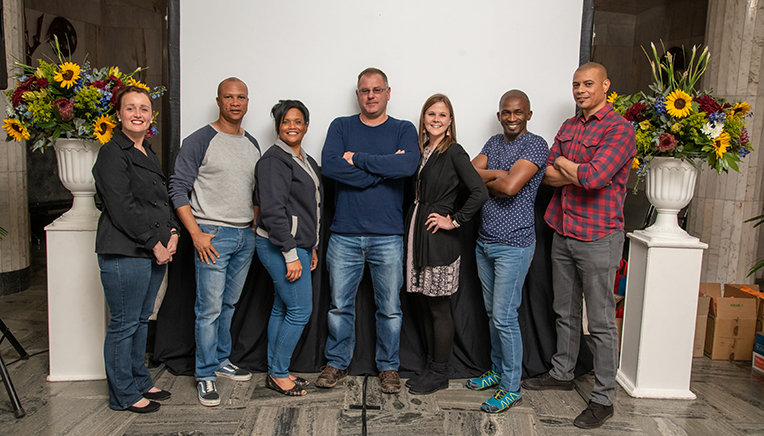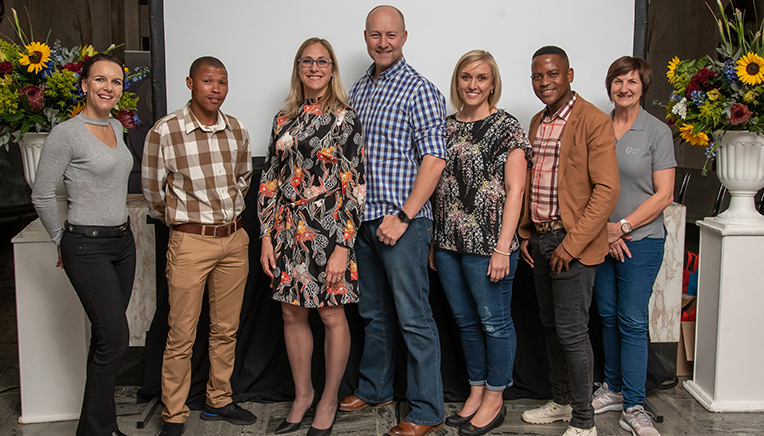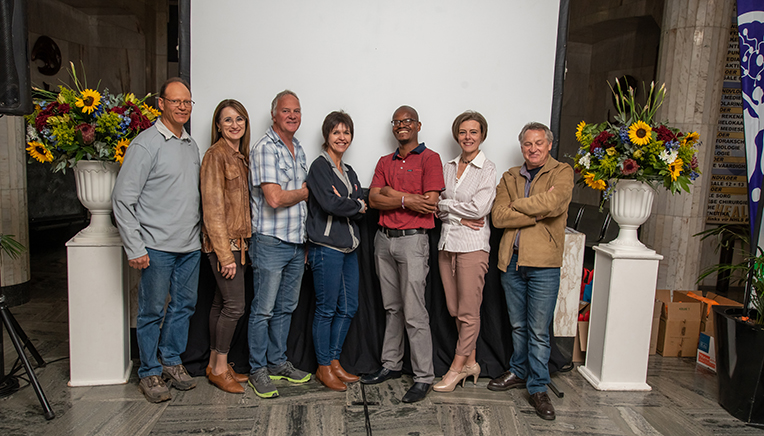Bringing hope to the millions of South Africans suffering from mental illness, is the message the
#UFSRun4MentalHealth team wants to resonate when they take on the 1 075 km distance between Bloemfontein and Stellenbosch.
On Friday 20 September 2019, three teams of enthusiastic runners from the
Faculty of Health Sciences and Organisational Development and Employee Wellness at the University of the Free State (UFS) will embark on the first UFS mental-health awareness run to Stellenbosch. Each runner will complete 9 km each day. “We will be passing on the baton of hope. There is hope, and no one is alone,” says Burneline Kaars, Head of Employee Wellness at the UFS.
The
#UFSRun4MentalHealth run will end on the campus of
Stellenbosch University (SU) on 25 September 2019, with the symbolic handover of the baton of hope to a representative of the SU management.

Team Blue. From the left: Jo-mari Horn, Patrick Kaars, Burneline Kaars, Riaan Bezuidenhout, George Dumisi, and Eugene Petrus.
(absent: Hendrik Blom)
#UFSRun4MentalHealth part of larger project“This initiative is our effort to mitigate the impact of inactivity experienced by our students and staff on their productivity and mental health. The purpose is to raise awareness and motivate people to get active,” says Burneline. Through this effort, the UFS is demonstrating care for student and staff well-being.
“Well-being is not only the responsibility of the organisation or university, but the responsibility of all of us,” says Prof Francis Petersen, Rector and Vice-Chancellor. “This initiative also demonstrates care – to look after one another, to take care of one another –from the organisation to our people, but also among ourselves.”
Prof Petersen points out that the
#UFSRun4MentalHealth forms part of a larger UFS project called ‘Project Caring’. He is also hopeful that the team’s effort to change the perception of mental health will encourage discussion and openness in the towns they will visit on their way to Stellenbosch.

Team Red. From the left: Arina Meyer, Nico Piedt, Brenda Coetzee, Justin Coetzee, Elna de Waal, De Wet Dimo, and Tertia
de Bruin.
Putting care into action“With this run to Stellenbosch, we are putting care into action,” says Susan van Jaarsveld, Senior Director, Human Resources.
According to the
South African Depression and Anxiety Group, 16% or about 9 million of South Africa’s adult population suffer from a mental disorder. “With this increased awareness, we hope that people will share their mental-health diagnoses and that this campaign will help to reduce the stigma surrounding mental health.”
The
#UFSRun4MentalHealth also links to the mission of the UFS Department of Human Resources to create an environment not only for high performance, but for optimal performance.
The sponsors of this initiative are
BestMed,
Standard Bank,
Shell,
Annique Health and Beauty,
Xerox,
Bidvest Car Rental,
Media24,
Kloppers,
New Balance,
Clover, Futurelife,
Mylan,
Pharma Dynamics, and the
SA Society of Psychiatrists.

Team White. From the left: Thys Pretorius, Lynette van der Merwe, Leon Engelbrecht, Arina Engelbrecht, Teboho Rampheteng,
Belinda Putter, and Lucas Swart.